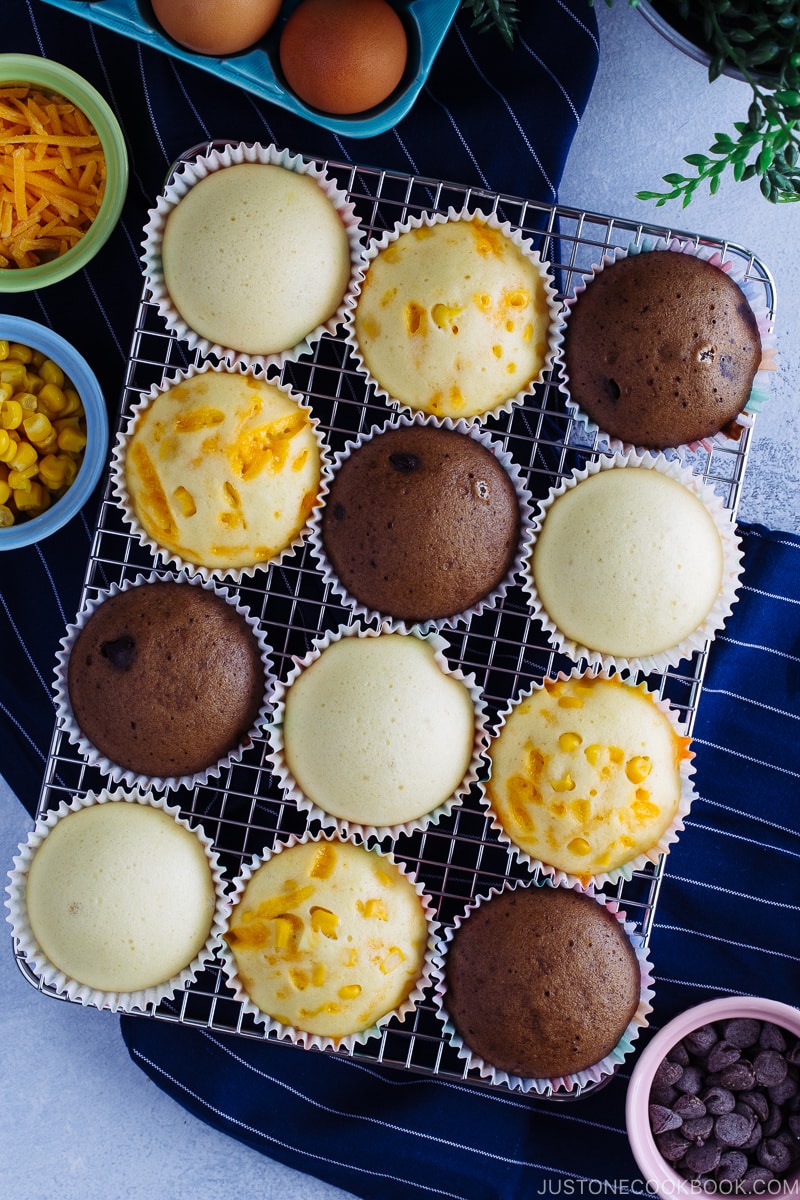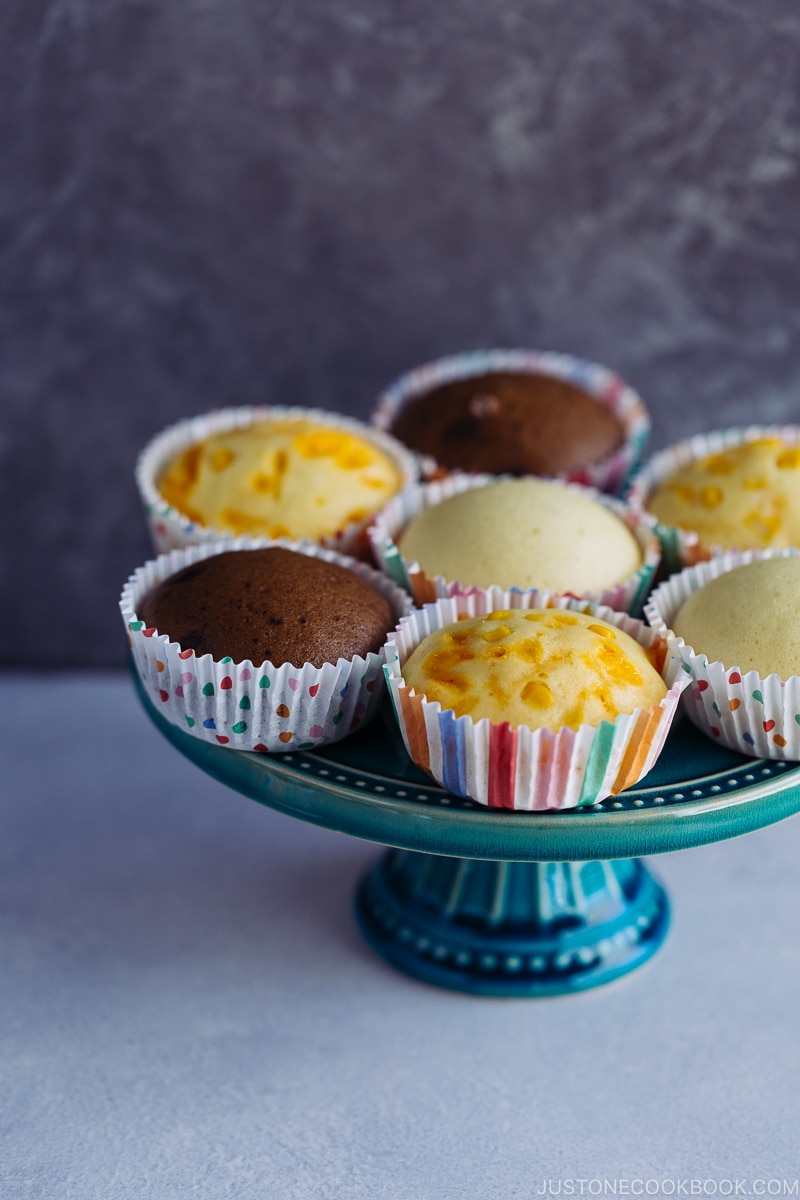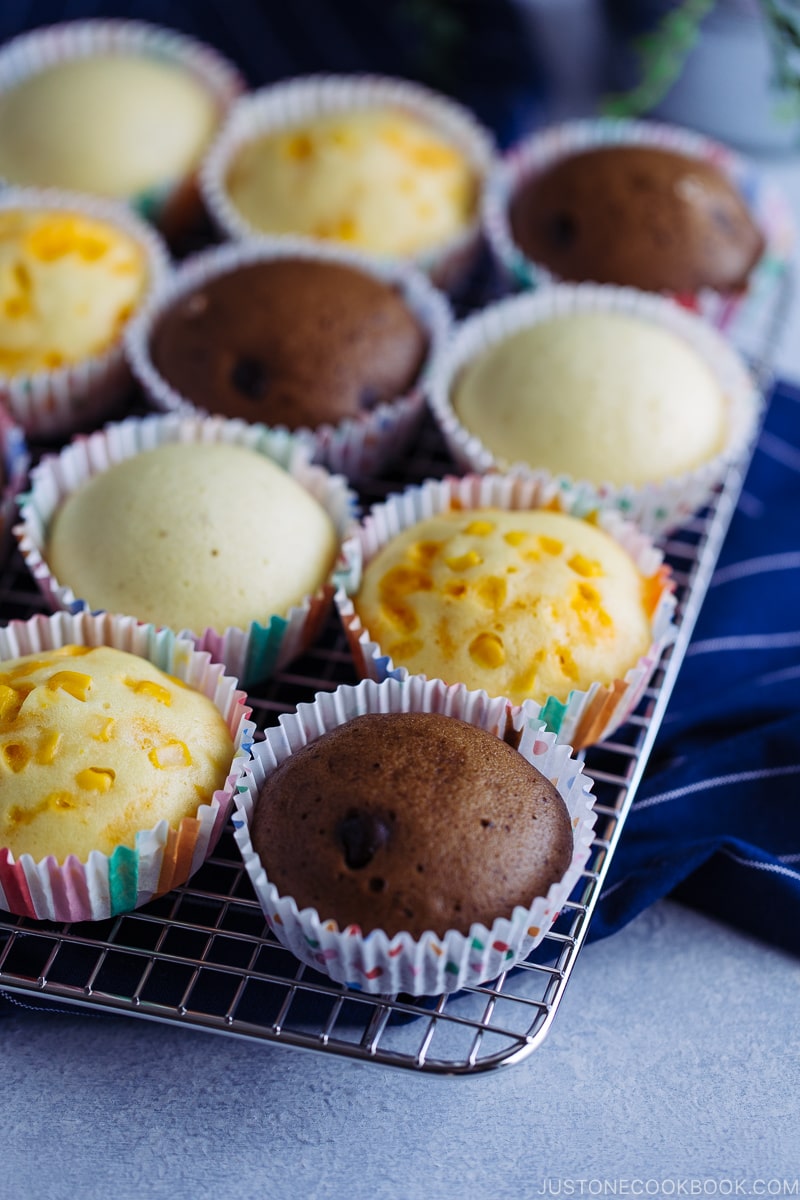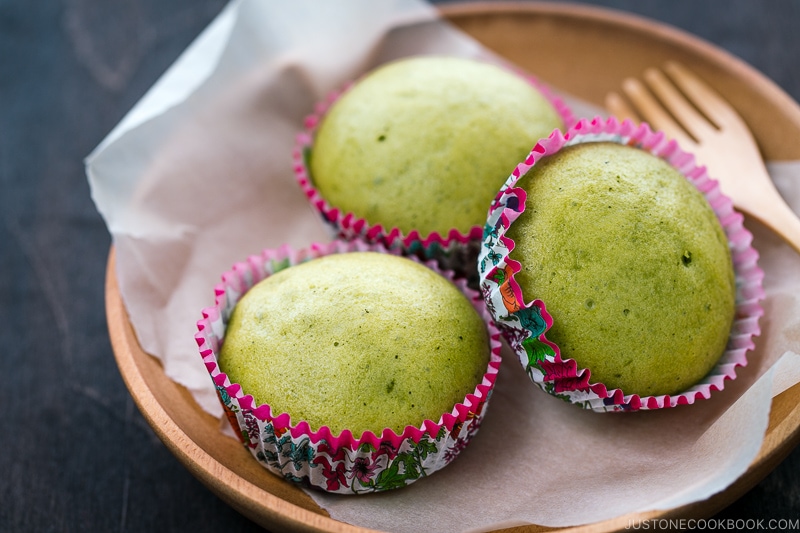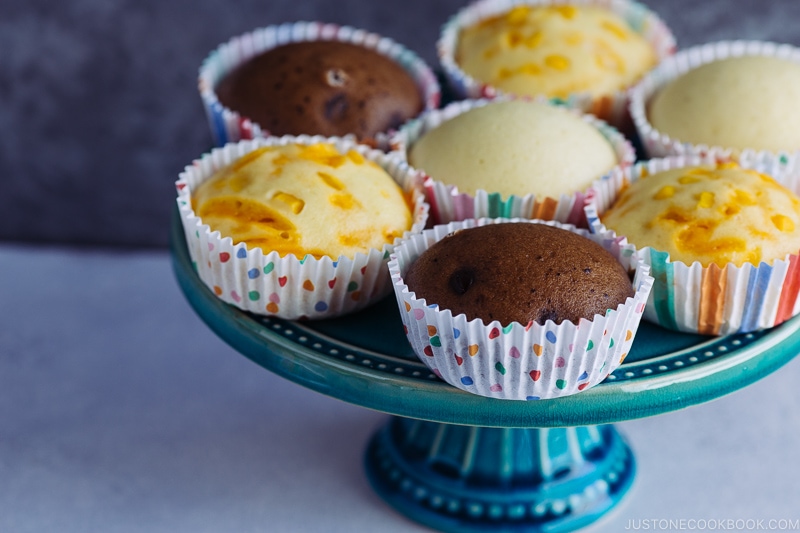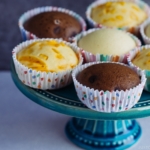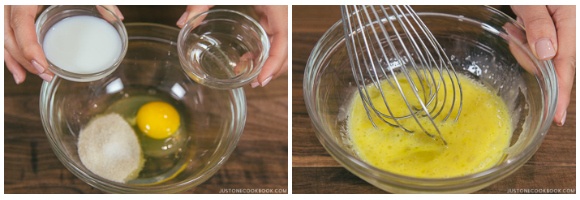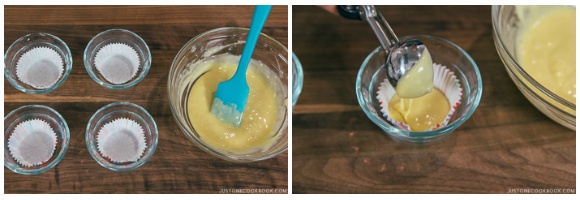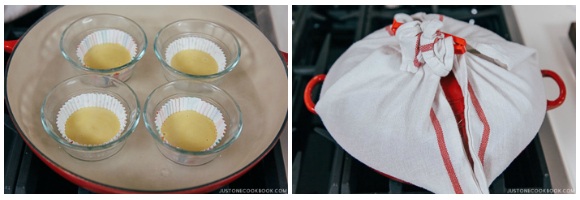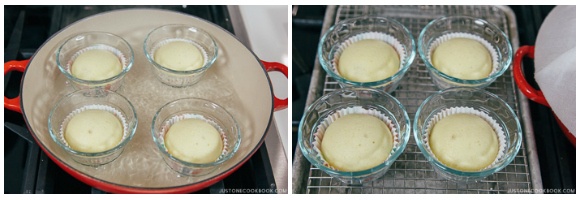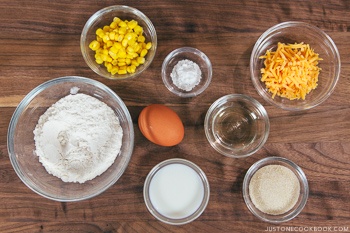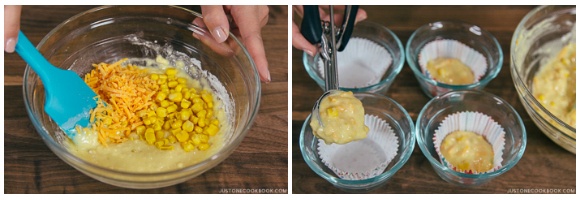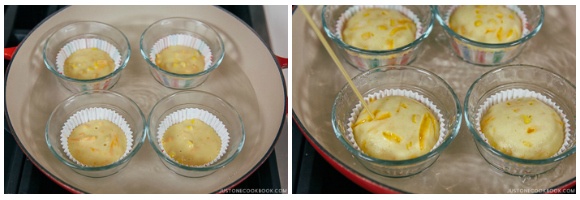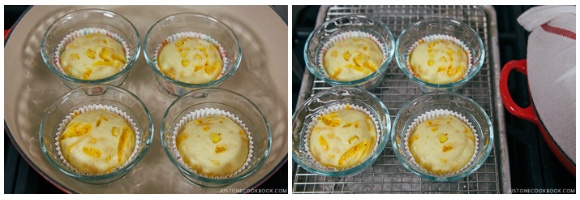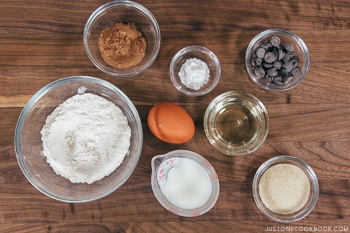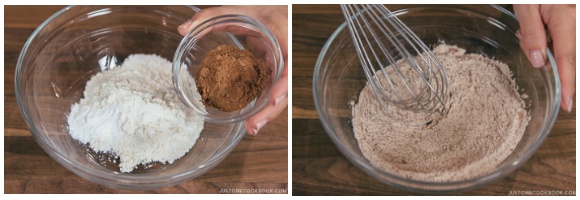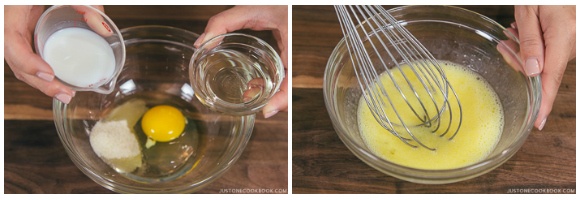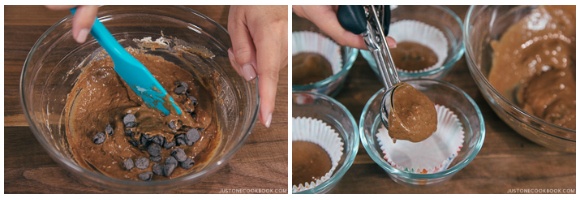These treats may look like muffins, but as you might have guessed – they’re not. We call these Steamed Cakes “Mushi-pan” (蒸しパン) in Japanese. The biggest difference between these cakes and muffins is that these delicious little treats are steamed instead of baked.
What is Steamed Cake (Mushi-pan)?
The Japanese cakes are made with very simple ingredients: flour (all-purpose flour or cake flour), baking powder, eggs, milk, sugar, and neutral-flavored oil (such as vegetable oil). While Chinese steamed bun called Mantou (饅頭) uses yeast as a leavening agent, Japanese steamed cakes use baking powder. After WWII, when a massive amount of wheat flour was imported from the U.S., and the Japanese started to eat more bread. We call it “pan” (パン) in Japanese. Around the same time, steamed cakes started to appear in Japanese kitchens. As sugar was expensive back then, the Japanese included small chunks of Japanese sweet potatoes (Satsumaimo) to sweeten the steamed cakes. These Satsumaimo Steamed Cakes are still the most popular flavor today. In the late 1980s, convenience stores in Japan started to sell Cheese Mushi-pan (チーズ蒸しパン) and Chocolate Mushi-pan (チョコ蒸しパン) that became really popular. I remember being addicted to the cheese version. The savory, cheesy flavor was really too hard to resist. My homemade version is not the same as those Cheese ones. However, homemade steamed cakes are equally delicious and you can play around with various flavors. Unlike store-bought cakes, there are no preservatives and additives. These healthy steamed cakes are soft and easy to digest, so they are perfect for small children!
3 Reasons To Make Mushi-Pan (Japanese Steamed Cakes)
1. Quick and easy to make
This recipe is so quick and easy to make! Even my children can make them as long as I help with the steaming. It only takes 20 minutes from start to finish. You can make them fresh whenever you want to eat them.
2. Versatile
The best part of steamed cakes is that they can be easily changed to either savory or sweet flavor. My Basic Steamed Cake recipe below is the standard where you can adapt to sweet or savory as you please. For sweet steamed cakes, you can add vanilla extract. I didn’t add it so the recipe can be changed to a savory one. I recommend keeping the sugar for the savory version as a slight sweetness helps to enhance flavor.
3. Re-steam to make it fluffy
You can store it in the refrigerator or freezer for later and re-steam it when you want to eat for a quick snack. The steamed cakes will be soft and spongy again! If you give my Mushi-Pan recipe a try, let me know. I’d love to hear about your variations and results in the comments!
Love Matcha (Green Tea)?
Check out my Green Tea Steamed Cake too! Wish to learn more about Japanese cooking? Sign up for our free newsletter to receive cooking tips & recipe updates! And stay in touch with me on Facebook, Pinterest, YouTube, and Instagram. Editor’s Note: This post was originally published on May 4, 2011. The new images were added in April 2017. The post was edited and republished in May 2020.
